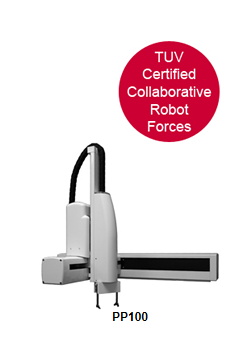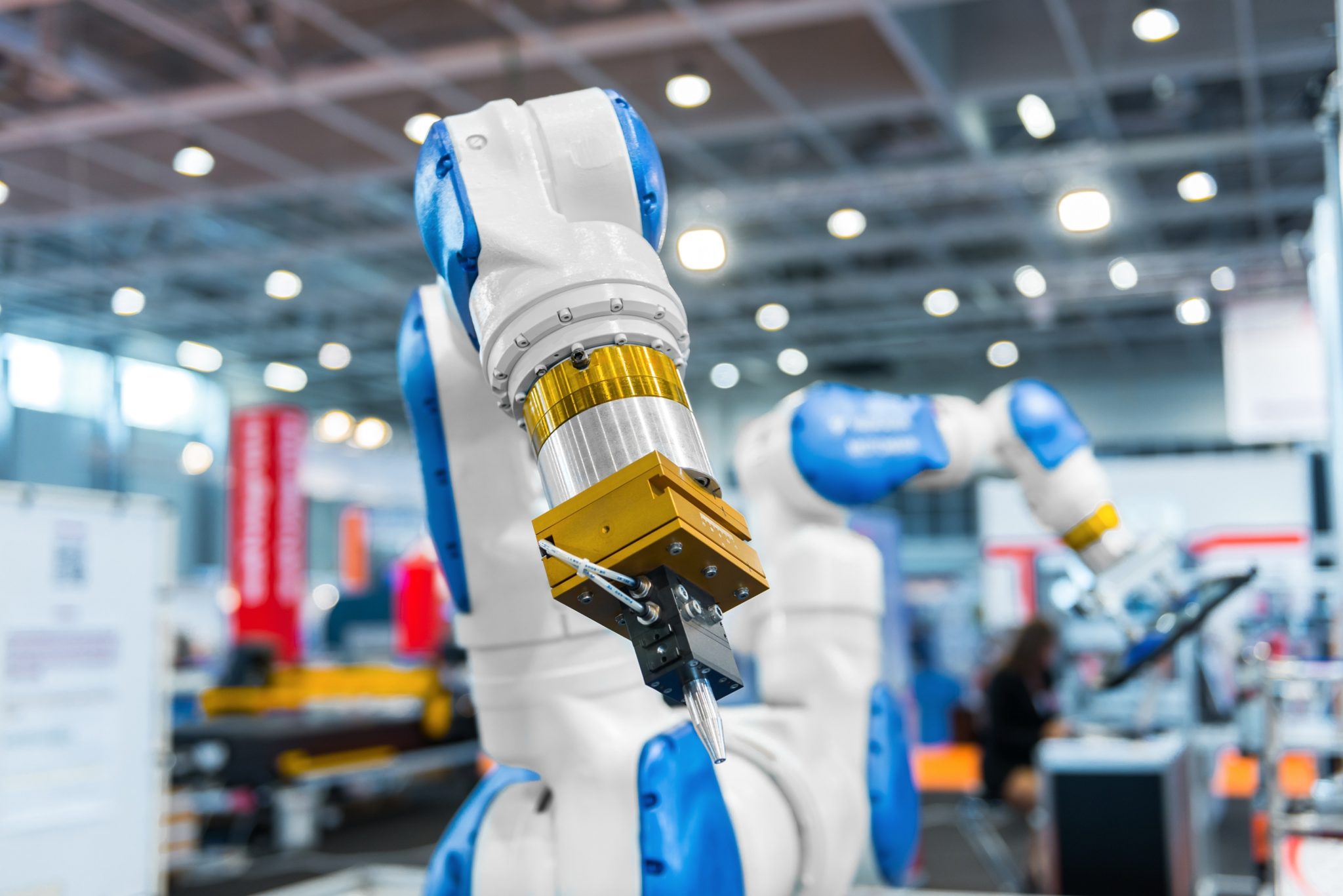Are you curious about the differences between a Cartesian robot and other types of robots? We understand it can be confusing when first hearing about robotic automation, so we’re here to help break down how Cartesian robots differ from other more commonly used models.
In this blog post, you’ll find out why Cartesian robots are often the go-to solution for automating repetitive tasks in industries like manufacturing and retail. With a better understanding of how they function, you’ll be empowered to make an informed decision that’s right for your business.
What is a Cartesian Robot?
A Cartesian robot is an industrial robot that is designed to move within a three-dimensional space. Functionally, it is like a robotic arm in that the robot operates from a stationary base that moves along three axes of motion – x, y, and z – to carry out automated commands. They are usually composed of three linear joints (plus one for wrist movement for some uses), each allowing for independent movements.
Key Features of Cartesian Robots
Key features of Cartesian robots include their precision and speed as well as their ability to repeat programmed instructions through exact coordinates. Additionally, they are dynamically adjustable and highly versatile, able to complete a variety of tasks with minimal setup time compared to other robotics systems without taking up valuable floor space.
“Until now, the collaborative robot market has been dominated by 6-axis articulated robots. These robots have complex geometries that create large workcells with significant dead space and make it difficult to teach positions. The simple Cartesian geometry of the PP100 is ideal for simple applications, and for adding process modules such as screwdrivers or dispense heads, and for mounting above equipment like conveyor belts. The integrated controls and ability to bridge conveyors allows this robot to be installed in many applications without taking up valuable floor space. Precise’s full line of industrial collaborative robots (SCARA, Cartesian, 6-axis) allows users to choose the right configuration for their application rather than trying to make a 6-axis robot fit into every workcell.” – Brian Carlisle, CEO of Precise Automation.
How Does a Cartesian Robot Differ From Other Types of Robots, Such as SCARA & Delta Robots?
Cartesian robots differ from other types of robots in their structure and design. While they are still largely composed of electronic hardware components, the way those components are arranged is unique.
Cartesian robots feature three linear actuators that provide movement across all three major axes, allowing for precise control right up to the nanometer level. It also allows them to cover large spaces quickly because it eliminates certain forms of setup time.
While SCARA and Delta robots offer similar speed capabilities, they are limited in terms of accuracy. SCARA robots move in arcs, and Delta robots move on a circular plane, so their motions are not as constrained as Cartesian robots but the dimensional range they can cover with each movement is limited. Additionally, programming a Cartesian robot requires fewer steps than other types, so it can be deployed for use more quickly than the others.
What are the Benefits of Using a Cartesian Robot for Manufacturing Tasks?
Easy to Set Up
It’s not uncommon for collaborative robots to use a programming environment with limited features that simplify setup for new users. The PP100’s simple Cartesian geometry is particularly easy for new users to teach since any position and move combination is intuitive and possible. Precise Automation’s collaborative robots offer the flexibility of both an easy-to-use web-based interface as well as an optional advanced programming environment as capable as any industrial robot. The easy-to-use Guidance Motion interface is accessible from any web-enabled device and allows technicians or operators to quickly and easily set up and teach the PP100 to perform real work.

Precise Automation has introduced the PP100 Industrial Collaborative Cartesian Robot. As the world’s only collaborative Cartesian robot, the PP100’s unique mechanical design offers a lower price than most collaborative robots and reduces the overall costs of tabletop applications. This lightweight robot is available with 2-axes (XZ) or 3-axes (XYZ) and an optional Theta and Servo Gripper. It can be carried by one person, mounted on a table, and by plugging in just an AC power cord, and an Ethernet cable is ready to operate. The controller, power supplies, and harnessing are embedded within the robot’s structure, simplifying installations and allowing the PP100 to be mounted above existing work areas and equipment such as conveyor belts. The collaborative Cartesian design allows for extremely small, cost-saving work cells that have minimal impact on existing production.
Collaborative robots permit the creation of a mixed manufacturing environment where people can enter and efficiently work around robots without the loss of throughput. The PP100’s unique combination of speed and safety allows its operation at full speed and delivers industrial throughput at safe ISO standard collaborative forces, so operators can move freely around the robot without concerns for their safety or loss of productivity.
Small Footprint
A Cartesian robot is capable of reaching every single point within a work envelope at an extremely reasonable cost. Their footprint is typically smaller than SCARA or six-axes robots. There is a growing demand for medium to large Cartesian robots.
Durability
Durability is a major plus since Cartesians can last for decades. Collaborative robots have gotten a lot of attention recently and have important uses. This type of system is built with stability and longevity in mind, meaning that its rigid aluminum construction provides necessary strength and stability while allowing for environments with higher shock, vibration, and temperature fluctuations. They may not be the appropriate high-speed, high-payload actions, but in the right circumstance are hard to beat.
Precision
Cartesian robots are more precise than other robots due to the fact that they move along three linear axes rather than requiring complex rotational movements. This allows them to insert greater accuracy into their performance. Not only can this type of robot rapidly perform complicated tasks with higher precision than traditional robots, but it also can reach tight spaces with ease and quickly change tools when required for different tasks.
Are There Any Drawbacks to Using Cartesian Robots in Industrial Applications?
Limited Range of Motion
Cartesian robots, while reliable and precise in many uses, may not be the most suitable for certain industrial applications. They have a limited range of motion compared to other types of robotics, allowing them to only work within a confined space.
Speed
Additionally, Cartesian robots typically operate at a slower speed when compared to other robot models due to the nature of their linear movements. This can reduce the throughput in certain automated operations where speed is essential.
How Do You Choose the Right Cartesian Robot for Your Specific Application Needs?
Choosing the right Cartesian robot for your specific application needs starts with exploring different robots’ key features and capabilities. Consider whether you need a three- or six-axis robot, payload capacity, operational speed, arms reach, accuracy, repeatability, and programming language.
If you need help choosing the right Cartesian robot for your specific application, contact the industrial automation experts at Sure Controls. We’ll help you figure out what you need and how it can improve your current automation situation.
If you would like to find out more about our products or have questions about what type of robot suits your needs best, don’t hesitate to get in touch with us today! Contact Sure Controls to speak with an associate about cartesian robots and get started on automating your processes affordably and efficiently!

